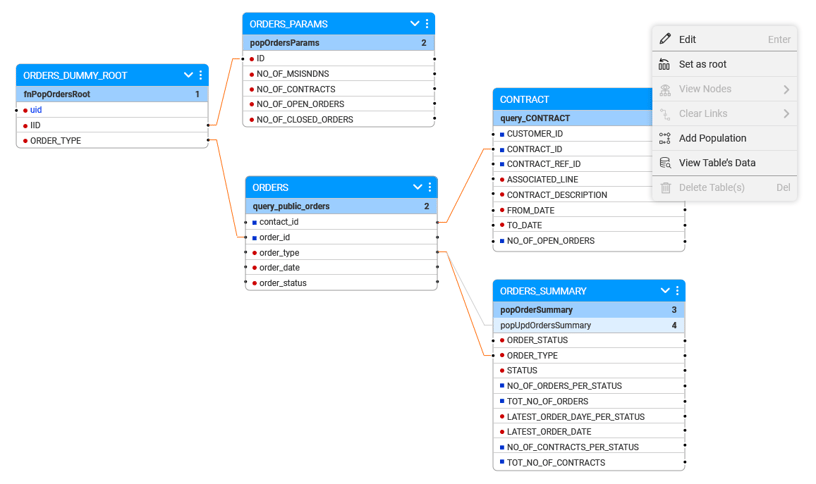A core value of modern data fabric design is a common language between IT and business, providing for data literacy across the enterprise – and, ultimately, better business outcomes.
Table of Contents
What is Data Literacy?
The Importance of Data Literacy
Bringing Data Literacy to the Enterprise
Implementing a Data Fabric – the Key to Data Literacy
Data Fabric Leads to Data Products and Data Literacy
What is Data Literacy?
Analyst firm Gartner defines data literacy as “the ability to read, write and communicate data in context, including an understanding of data sources and constructs, analytical methods, and techniques applied”.
A common data language is a core competency for data-driven enterprises, and a distinct competitive advantage over companies who can’t derive value from data and analytics as successfully.
Data literacy is an integral part of digital dexterity, which makes use of existing and emerging technologies to drive better business outcomes.
The Importance of Data Literacy
The exponential growth of data tools, and methods to drive timely and informed decisions across the enterprise, requires data creators and consumers to speak data as a common language. Enterprises must champion workforce data literacy as an enabler of digital business and treat information as a second language.
As data and analytics become more intertwined with digital business, all enterprise employees should be able to hold intelligent conversations about data. Yet most, can’t.
A global study by the National Center for Education Statistics (NCES) on data interpretation and problem-solving skills, ranked the US a dismal 21 out of 23 participating countries. Clearly, a vast percentage of the workforce needs to improve its data literacy skills.
Best-in-class enterprises achieve data literacy by: (1) Implementing a data fabric,
(2) building a data academy, and (3) consistently applying data to decisioning.
Bringing Data Literacy to the Enterprise
Data skills are now critical for practically every role in the enterprise. However, with so many deficiencies in basic data skills, across so many functions, it’s hard to know where to start. We’ve narrowed down the path to data literacy to 3 foundational pillars:
-
Implement a data fabric to democratize data access
Most of your staff won’t have access to your enterprise data, and won’t know how to interpret it. A data fabric democratizes data access (with the right data governance measures, of course), enabling users to take control of their data and put it to timely use. More on that, below. -
Set up an online academy for the advancement of data literacy
Establish a virtual learning center, which employees can use to advance their data literacy skills.
First, select the data skills needed by your workforce. Then prepare and organize the articles, tools, and videos, you’ve chosen to cultivate those skills. Remember that less is more, especially in terms of learning a second (data) language.
Second, make certain capabilities of your enterprise data catalog accessible for employees to understand the meaning and inventory of your data assets.
Third, educate your staff as to the advantages of improved data familiarity, literacy and skills, such as better overall judgment, more informed decision-making, and increased confidence when making those decisions. To do this, document and leverage internal success stories as concrete, down-to-earth examples of the business benefits of data literacy. -
Apply data to all your decision making
Make the first question, “What do the numbers say?”, when considering a particular course of action. Engrain this question into your enterprise’s DNA.
When data is presented as evidence to justify a decision, encourage people to question it: Are the data sources reliable and current? Is the analysis correct? What further proof would we need in order to act?
Data literacy is important for everyone. Enterprises need more people who can interpret data, draw insights from it, and ask the right questions, from the start. These are skills that all workers can develop, especially when motivated to educate themselves, and when companies are prepared to support such efforts.
Data literacy is a win-win for the enterprise and its employees because, in the end of the day, operational intelligence improves business performance.
Implementing a Data Fabric – the Key to Data Literacy
Modern data fabric design is based on business entities (be they customers, suppliers, products, stores, credit cards, orders, or anything else important to the business). Implementing an entity-based data fabric creates a semantic abstraction layer that hides the data complexity (including specific domain expertise and technical jargon) from the users.
It essentially forces tech-savvy data engineers to use a common “business” language.
Just as important, data fabric makes a real-time, single view of any business entity available to data consumers, without them needing to worry about how the data was stitched from disparate source systems.
Having a common language provides for data literacy by aligning IT and business in the following ways:
-
Better understanding of business needs by IT
IT teams can now make the right data accessible at the right time, because business users can better articulate their needs, down to the field level.
-
Greater overall access to data by the business
Business users benefit from self-service enterprise data pipelining, and an automated data catalog that provides a clear understanding of the available data assets and their lineage to the source systems.
-
Enabling adoption of the “Data as a Product” approach
Treating data as a product enables IT and business to collaborate in managing an agile, cross-functional data product lifecycle, and deliver quick, incremental value to data consumers.

A modern data fabric design uses a common “business” language that is universally understood.
Data Fabric Leads to Data Products and Data Literacy
A data fabric, which collects, manages, prepares, and delivers data in the form of data products aligned with business entities, leads to data literacy. It defines and manages the entire lifecycle of data, and operationalizes the data flows used to create, maintain, and deliver the data to its consumers.
A data fabric defines an intermediary logical data schema that aggregates all the attributes of a business entity across all systems, in order to prepare and deliver a holistic and trusted view of the business entity.













